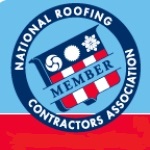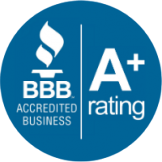Hicksville Roofing: Article About Best Roofing For Humid Climates
Roofs are tested to see how well they resist the spread of fire. Those results are classified in A, B and C ratings. Class-A roofs allow flames to spread up to 6 feet. For Class-B roofs, the maximum spread is 8 feet, and Class-C roofs may spread flames up to 13 feet.
Hicksville roofing contractor answers a question: How do fiberglass shingles differ from regular asphalt shingles?Both types of shingles actually have asphalt in them; the difference derives from their backing materials. Regular asphalt shingles have felt matting that is made of organic substances like paper and wood. The felting on fiberglass shingles is made of glass fibers layered with a plastic resin. Mineral fillers are blended into the asphalt that then coats the fiberglass-and-resin base to create the fiberglass shingle.

Wet winters, rainy spring months, hot and humid summers and the cool, moist autumns of New York mean that exteriors here never really get much chance to dry out. That's true for rooftops, too, so it's important to choose a roof that provides an excellent water-resistant seal and prevents the mold and mildew that can take hold in these moist climates.
Finding the type of roof that deals well with humidity, seals the roof line, provides energy savings and offers the look you want can take some time. With years of experience in building and roofing in humid climates, your established Hicksville roofing contractor can help you find the right kind of roofing for your home. Learning a little about potential options before you meet with your roofer can help you discuss your choices more easily and speed up your decision.
Asphalt shingles are a popular option for most climates because they are affordable, they provide good weather protection and they are available in many different styles, colors and price points. Shingles already repel and handle water well, but for humid climates, it's best to choose shingles that have algaecides to retard mold and mildew growth.
Fiberglass shingles are also a terrific option because their extra strength makes them especially hardy in hot, moist conditions.
Have a question regarding TPO roofing or roof inspections? Ask Long Island Roofing of Hicksville NY.
They function so well in humid climates, in fact, that they are sometimes required in place of organic asphalt shingles. They are also very fire resistant, usually carrying a Class-A fire rating. Like asphalt shingles, their style and color options are abundant.
It may seem counterintuitive, but metal roofs and metal tiles are also good choices for this region. Most newer metal roofs are waterproof, rust-resistant and discourage mold. Metal roofs are often more wind resistant as well, and they are available in cooler colors to provide more energy efficiency. There are some downsides to metal roofs, though. They can be much more expensive than either of the shingle options, and they can be dented or damaged by hail. Since metal roofs are often installed in large metal sheets, repairs and replacements can be challenging.
To maximize your roof's energy efficiency, choose options that allow you to utilize today's cool roof technology. It can get very warm in the summer here, and the humidity makes it feel even warmer. A cool color roof reflects much of the summer heat, preventing if from seeping into your home. The result is a cooler interior temperature and lower cooling costs.
Staying cool and dry is just as much a priority for your roof as it is for you on long, hot summer days. Help your roof tolerate the humidity and keep cool by making smart choices about your roofing materials.









